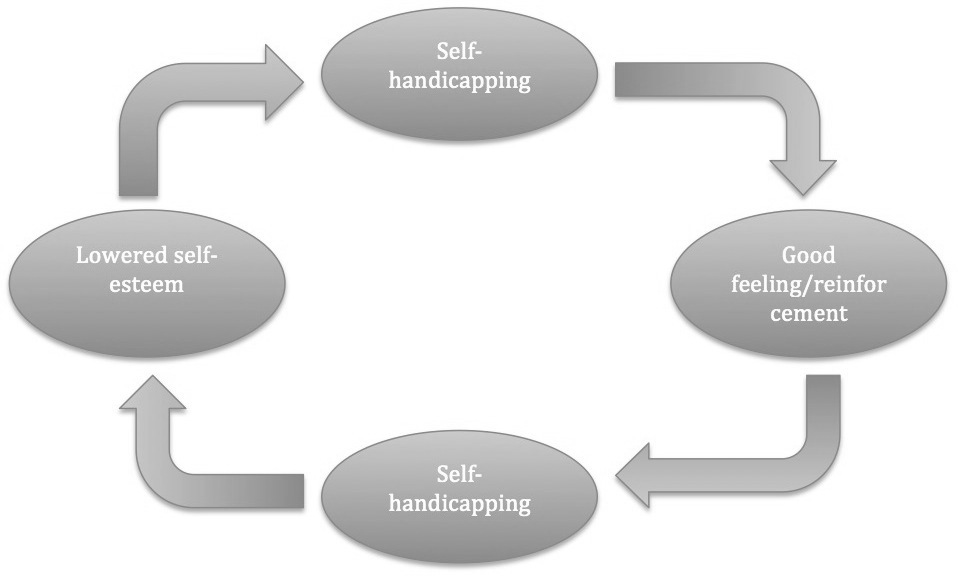Introduction
The Self-Handicapping mental model refers to the tendency of individuals to create obstacles or excuses that impede their own performance or achievement. It is a cognitive bias deeply rooted in human psychology that affects decision-making processes and undermines personal and professional success. By understanding the concept of Self-Handicapping, its prevalence in our daily lives, and its underlying psychological mechanisms, individuals can avoid falling into this trap and make more informed decisions. In this blog post, we will explore the concept of Self-Handicapping, its impact on decision-making, real-life examples, strategies for identification and avoidance, and the significance of awareness in navigating this mental bias.
The Relevance of Self-Handicapping in Decision-Making
Self-Handicapping plays a significant role in decision-making processes, particularly in situations where individuals fear failure or have a desire to protect their self-esteem. By creating self-imposed barriers or excuses, individuals can attribute their underperformance to external factors rather than their own abilities, preserving their self-image. However, this bias ultimately hinders personal growth, achievement, and optimal decision-making. Recognizing and addressing Self-Handicapping is crucial for individuals seeking to overcome self-imposed limitations and make choices that align with their true potential.
Examples of Self-Handicapping
- Personal Life Decisions: Consider an individual named Sarah who is hesitant to pursue her dream of starting her own business. Instead of taking the necessary steps to launch her venture, Sarah continually finds reasons to delay, such as waiting for the perfect conditions or claiming a lack of resources. By engaging in self-handicapping, Sarah avoids taking risks and shield herself from potential failure, but ultimately prevents herself from pursuing her true passion and achieving her entrepreneurial goals.
- Business Scenarios: In the business world, self-handicapping can manifest in various ways. For instance, a salesperson may intentionally procrastinate on following up with potential clients, citing a busy schedule or external circumstances. By doing so, the salesperson creates an excuse for potential failures, attributing them to the lack of time rather than their own sales skills. This self-sabotaging behavior not only limits their sales performance but also hinders professional growth and advancement.
- Public Policy-Making: Self-Handicapping can also impact public policy decisions. Politicians or policymakers may engage in self-handicapping by blaming external factors, such as budget constraints or opposition, for their inability to implement effective policies or bring about positive change. This self-protective behavior allows them to maintain their image and deflect responsibility, but it ultimately undermines the well-being of the constituents they serve.
Mental Biases and Underpinnings
Several cognitive biases contribute to Self-Handicapping. One key bias is the fear of failure, which leads individuals to protect their self-esteem by creating barriers or excuses that preemptively explain any potential shortcomings. This bias stems from the natural desire to avoid negative evaluations and preserve a positive self-image.
Another contributing factor is the self-serving bias, wherein individuals attribute successes to their own abilities and efforts but attribute failures to external factors. By engaging in self-handicapping, individuals protect their self-worth by attributing underperformance to external factors beyond their control, effectively shifting the blame.
Identifying and Avoiding Self-Handicapping
To avoid falling into the trap of Self-Handicapping and make more objective decisions, individuals can employ several strategies:
- Recognize self-sabotaging behavior: Be mindful of patterns of behavior that involve creating excuses, procrastinating, or avoiding challenges. Awareness of self-handicapping tendencies is the first step towards overcoming them.
- Challenge limiting beliefs: Examine the underlying beliefs that contribute to self-handicapping and question their validity. Challenge the notion that failures define personal worth and recognize that setbacks are opportunities for growth and learning.
- Embrace a growth mindset: Adopt a mindset that acknowledges the potential for improvement and development. Embrace challenges as opportunities to expand skills and knowledge, rather than as threats to self-esteem.
- Seek support and accountability: Surround yourself with individuals who encourage and support your goals. Seek feedback from trusted mentors or peers who can help you navigate challenges and hold you accountable for your actions.
Conclusion
Self-Handicapping is a cognitive bias that can hinder personal and professional success by creating self-imposed barriers or excuses. By understanding the concept, identifying self-sabotaging behaviors, and challenging limiting beliefs, individuals can break free from this mental trap and make decisions that align with their true potential. Awareness and active avoidance of Self-Handicapping are crucial for personal growth, achievement, and maintaining a proactive mindset that embraces challenges and opportunities for success.
